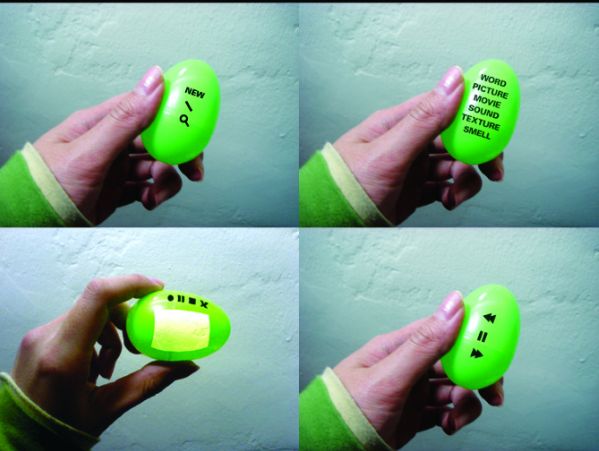
When it comes to brainstorming on a design project, computer aided design is the default technological interface that we use. But in the larger creative world, design interfaces differ vastly with the interfaces traditionally used in pottery design being different from that being used in designing home furnishing and auto design and so forth. The Brainstorm Egg by Haemi Yoon looks to find a common platform which can enable designers to integrate sensuous stimuli like space, various interfaces, different activities, system behaviors, human gestures, affordances and physical objects in the process of creating new ideas.
The project is basically a communicator that can interact with various interfaces during ideation providing users the ability to remember details during a group discussion. The project operates on two levels, using a projector and the egg to provide a common interface for interaction.
The high-tech projector is roughly the size of a coin which allows for greater portability and allows designers to present ideas on various everyday surfaces and virtually anywhere. This liberates people from incurring the cost of getting people together in a specific place for a presentation.
The Egg itself is a touch-enabled multi-surface interaction tool with a menu tool that helps users take advantage of the built-in texture scanner, camera and microphone that can record ideas in various formats to be presented later. An accelerometer is also built into the Egg that detects motion and allows greater flow of interaction during a presentation.
The integration of the projector and the egg will form the bulk of the interface that will contribute immensely to the creative process. Easy access to saved references, the ability to view past inspirations and the capacity to visualize ideas as they are formed helps speed up the brainstorming process. It would also allow users to “save” inspiration or ideas as they occur to them without having to physically write them down or input in a computer.
Source: Haemi Yoon

